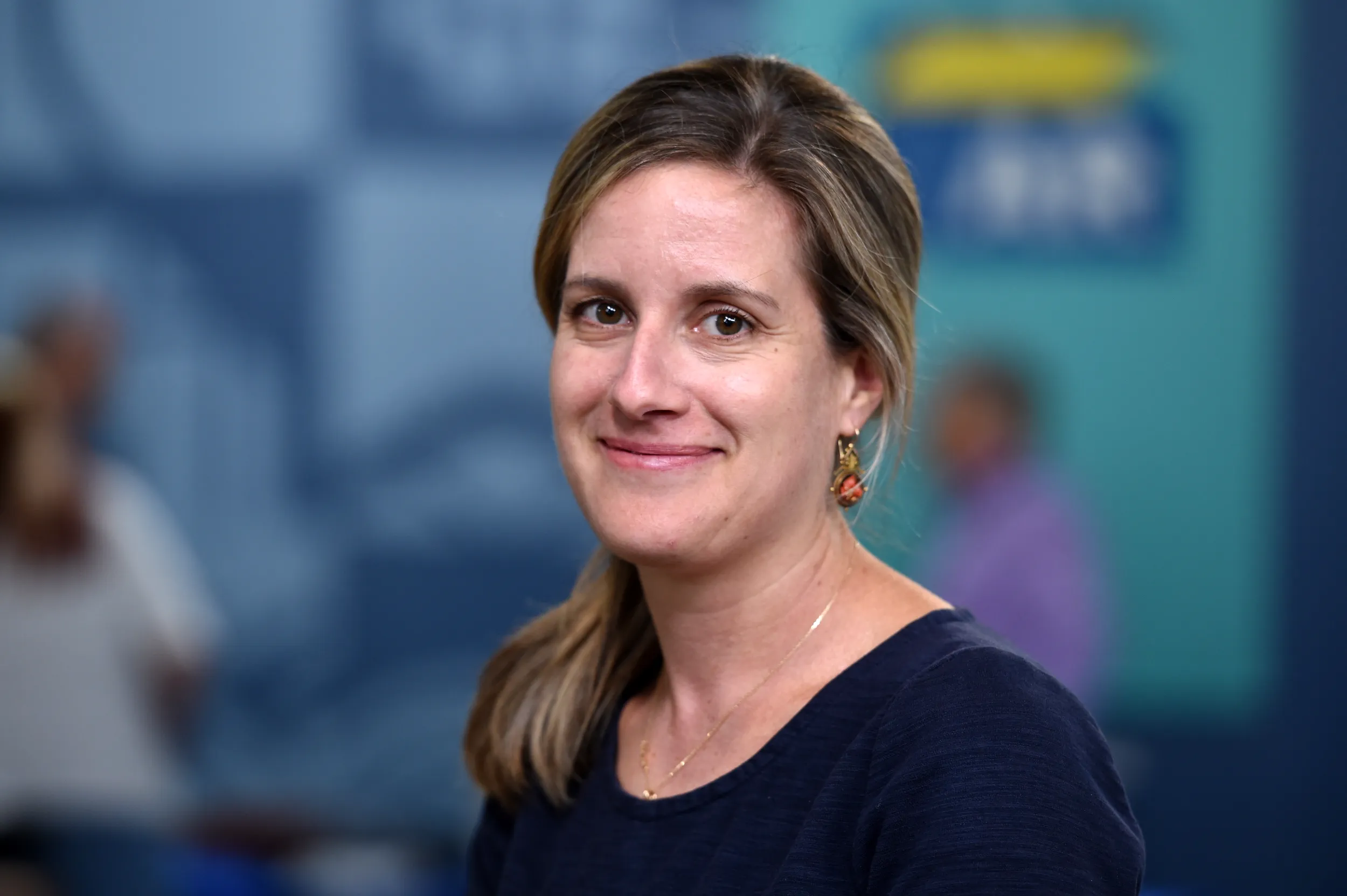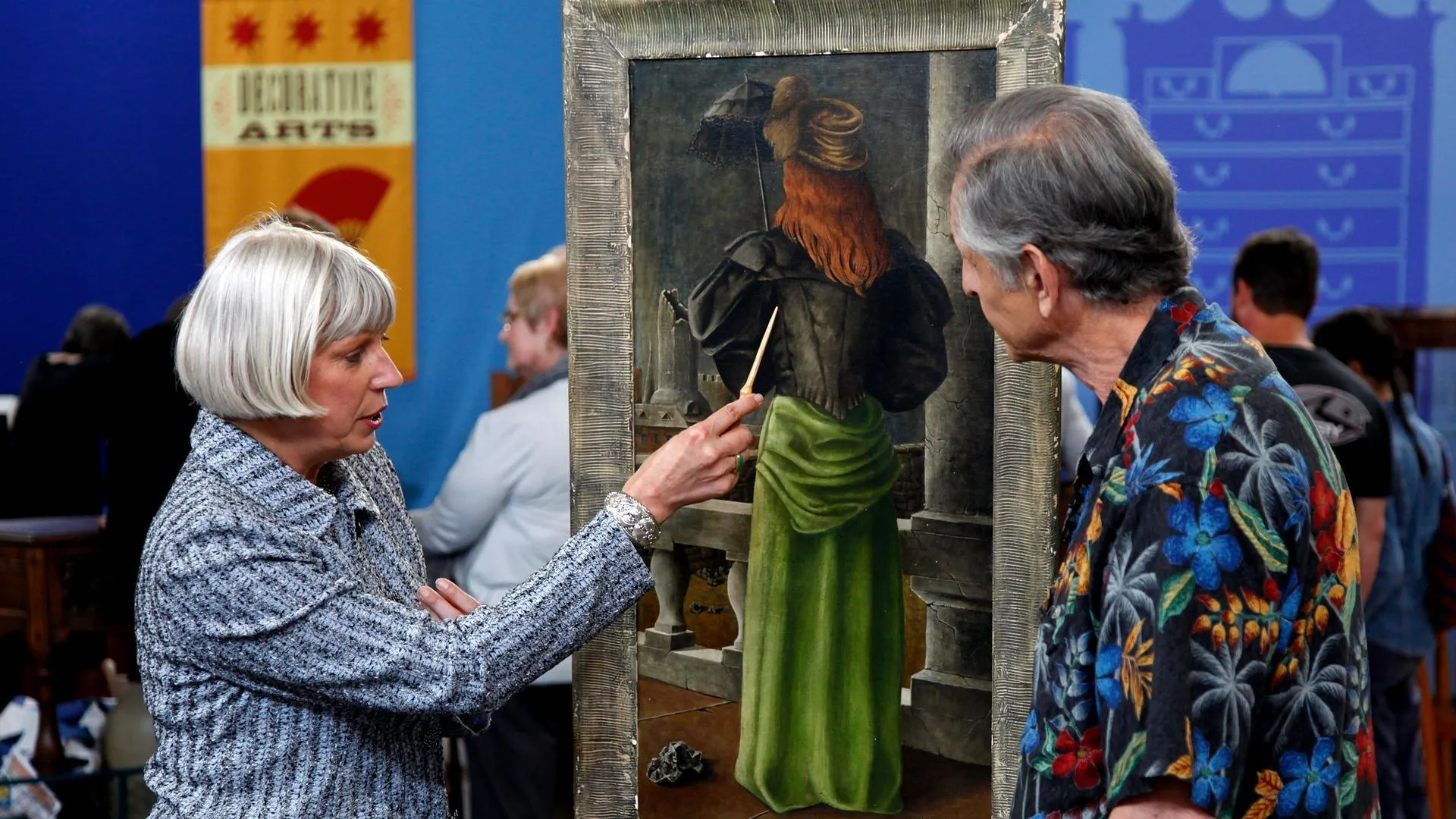GUEST: It was in a small bookstore on the mall in Lahore, and I loved it, and I didn't buy it the first time I saw it, and then I couldn't get it out of my mind and went back. We were teaching at the Lahore American School, and so we didn't have a lot of money, but I decided I was going to buy it anyway, and I did. And I've loved it ever since.
APPRAISER: What year was this?
GUEST: We went to Lahore in 1968 and left in 1970.
APPRAISER: And were you familiar with the artist at all before you saw the work?
GUEST: No, I had never heard of him. I learned later that he's fairly well known.
APPRAISER: Yes, Abdur Rahman Chughtai is one of Pakistan's most celebrated artists. He was born just before the turn of the 20th century and died in about 1975. He's known for these very dense lines here that are beautifully curly and densely packed. They sort of bring to mind the style of the art nouveau artists like Aubrey Beardsley, artists that maybe Westerners might be more familiar with, and that type of line was very popular at the turn of the century in India and Europe both.
GUEST: It is an etching, isn't it?
APPRAISER: Yes, it's a drypoint etching. The artist is really well known for celebrating the daily life of average, ordinary people as well as celebrating the beauty of the female form. He lived in Pakistan when it was still a British colonial area, and he saw, over the course of its lifetime, it change in politics and religion and a lot of his art speaks to that. So in the present work here, what we see, the Kashmiri woodcutter, a very common sight in Kashmir, as you probably know from when you were there.
GUEST: We saw that.
APPRAISER: You have this main figure in the foreground here, hunched over with his bag of sticks. He's wearing a typical robe dress of the period. He's hunched over due to the weight of his materials. Receding in the background, you've got at least two more figures who are retreating into the beautiful design of the imagery. It's quite lovely. The print was most likely made between the 1950s and the 1970s. I'm guessing by the style of the printing and the imagery, but it's clearly looking to that 1920s style. There are not too many auction records for something like this until quite recently. When India and Pakistan and those countries underwent major economic changes in the early '90s, a lot of artists from those areas suddenly found a booming market, because there was a lot more money in these countries, so the auction houses saw a huge surge in prices and demand for artists from India and Pakistan both. So you don't have any idea of the value of it now?
GUEST: None at all. I know how much I paid for it.
APPRAISER: Tell me how much you paid for it.
GUEST: I'm pretty sure it was 100 rupees at the time, which would have been around ten dollars, give or take.
APPRAISER: I think that was a pretty good investment. I would estimate an auction estimate right now between probably $7,000 and $10,000.
GUEST: Really? Oh... oh, my goodness! That's fun. Oh, that's exciting. What a treat! My husband is going to be so excited.












